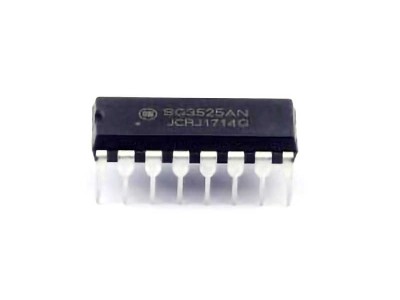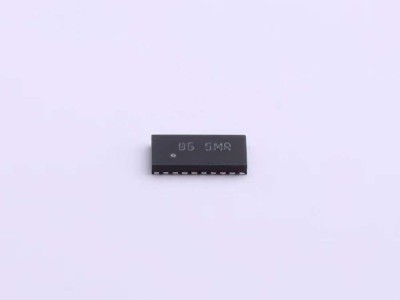Common Issues with LQH32CN101K23L and How to Diagnose Them
The LQH32CN101K23L is a highly regarded component, often used in various electronic circuits, particularly for filtering, signal processing, and other similar applications. However, like any other electronic component, it is susceptible to issues that may affect its performance. Understanding how to troubleshoot and resolve these issues is essential to maintaining the integrity of your circuits and ensuring the reliable operation of your devices.
1. Understanding the LQH32CN101K23L
Before diving into troubleshooting, it’s important to familiarize yourself with the basics of the LQH32CN101K23L. This component is a type of inductor, known for its high inductance values and compact size. It plays a critical role in various power management systems, particularly for decoupling, filtering, and other applications that require stable energy storage and release.
The key specifications of the LQH32CN101K23L include:
Inductance value: 100 µH
Tolerance: ±10%
Rated current: 230 mA
Self-resonant frequency: 12 MHz
Understanding these parameters will help you better diagnose potential problems and determine when the component is functioning outside of its specifications.
2. Common Issues with the LQH32CN101K23L
While the LQH32CN101K23L is generally reliable, several issues can arise during operation. Below are some of the most common problems encountered and how to identify them:
a. Component Overheating
One of the most common issues that users face is overheating. Overheating can occur if the inductor is subjected to excessive current or operating in an environment that exceeds its rated temperature. The LQH32CN101K23L has a maximum operating temperature of 125°C, and surpassing this limit can damage the component, affecting its inductance and overall performance.
Signs of Overheating:
Significant rise in temperature around the component.
Decrease in inductance value.
Visible damage such as discoloration or burnt areas on the component.
Diagnosis:
Measure the current through the inductor. If the current exceeds the rated 230 mA, consider reducing the current or adding a current-limiting circuit.
Use a thermal camera to check for abnormal heating patterns.
Inspect the surrounding components and circuit layout for signs of heat concentration.
b. Inductance Drift
Inductance drift occurs when the LQH32CN101K23L’s inductance value changes over time due to environmental factors like temperature changes, humidity, or electrical stress. This can result in performance degradation, especially in sensitive filtering applications.
Signs of Inductance Drift:
Circuit performance degrades, with increased noise or ripple in power supplies.
Inaccurate frequency response in signal processing circuits.
Diagnosis:
Measure the inductance of the component using an LCR meter. Compare the measured value with the specified inductance value (100 µH).
Check for environmental factors that could be influencing the component’s behavior, such as extreme temperature shifts or high humidity.
Inspect the component’s connection points for oxidation or damage, which could affect the inductance.
c. Soldering Issues
Incorrect soldering can lead to poor connections or even permanent damage to the inductor. Cold solder joints, poor contact, or excess solder can cause intermittent connection problems, leading to inconsistent performance of the LQH32CN101K23L.
Signs of Soldering Issues:
Intermittent connection or loss of signal.
Physical inspection may show poor solder joints, such as cracks, solder bridges, or lack of adhesion to the PCB pad.
Unstable electrical behavior (e.g., fluctuating resistance or inductance).
Diagnosis:
Visually inspect the solder joints under magnification, looking for cold joints, cracks, or excess solder.
Use a continuity tester to ensure that the inductor is properly connected to the circuit.
Reflow or re-solder the joints if necessary, ensuring good thermal contact and secure connections.
d. Circuit Board Layout Problems
Improper PCB layout can also lead to issues with the LQH32CN101K23L, particularly with respect to electromagnetic interference ( EMI ) and signal integrity. Poor placement of components, inadequate grounding, or routing of traces near high-current paths can result in noise and degradation of the component’s performance.
Signs of Layout Problems:
Increased EMI and noise in the circuit.
Reduced filtering performance.
Unstable voltage or current output.
Diagnosis:
Review the PCB layout to ensure the LQH32CN101K23L is placed away from sources of noise and has adequate grounding.
Consider using a ground plane and keeping high-current paths separate from sensitive components like inductors.
Use an oscilloscope to check for noise or ripple in the output signal.
3. General Troubleshooting Steps
When troubleshooting the LQH32CN101K23L, follow these general steps to identify and resolve issues:
Visual Inspection: Start with a thorough visual inspection of the component and surrounding area for any visible damage or obvious issues such as poor solder joints or damaged pads.
Measure Key Parameters: Use instruments such as an LCR meter to check the inductance value, a multimeter for continuity, and a thermal camera to monitor the component’s temperature.
Check Circuit Conditions: Ensure that the inductor is operating within its rated current and voltage limits. If the current is too high or the voltage is too low, adjust the circuit design or replace the component.
Review the PCB Layout: Verify the layout for proper component placement and routing to minimize interference and ensure optimal performance.
Replace the Component: If the LQH32CN101K23L has sustained irreversible damage, replacing the component with a new one may be necessary.
By following these troubleshooting steps, most common issues with the LQH32CN101K23L can be identified and resolved efficiently.
Advanced Troubleshooting Techniques and Preventative Measures for LQH32CN101K23L
While the steps outlined in Part 1 will help resolve the most common issues, some scenarios may require more advanced troubleshooting techniques. Additionally, preventive measures can be taken to avoid recurring issues and extend the lifespan of the LQH32CN101K23L. This section covers advanced diagnostic tools, design considerations, and maintenance practices to ensure optimal performance of the LQH32CN101K23L.
4. Advanced Diagnostic Techniques
When basic troubleshooting steps do not yield results, more advanced diagnostic techniques may be necessary. Here are some advanced tools and methods to help you pinpoint more subtle issues:
a. Use of Impedance Spectroscopy
Impedance spectroscopy is a powerful tool that can be used to characterize the behavior of inductors across a range of frequencies. By measuring the impedance of the LQH32CN101K23L at different frequencies, you can detect issues like inductance drift, resonance, or parasitic capacitance that may not be apparent with simple DC measurements.
How to Use Impedance Spectroscopy:
Use an impedance analyzer to sweep the frequency range and measure the impedance of the LQH32CN101K23L.
Compare the impedance response with the expected curve for a healthy inductor.
Look for shifts in the resonance frequency or spikes in impedance, which could indicate problems such as internal shorts, inductance degradation, or parasitic effects.
b. X-ray Inspection
In cases where there is a suspicion of internal damage or hidden faults (such as cracks or voids within the component), X-ray inspection can provide a non-invasive way to visualize the internal structure of the LQH32CN101K23L. This technique is particularly useful when troubleshooting high-value or mission-critical components where a replacement may not be feasible.
5. Preventative Measures for Prolonged Performance
While troubleshooting is essential when problems arise, preventing issues before they happen is always preferable. Here are some proactive measures you can take to ensure the LQH32CN101K23L performs reliably over time:
a. Proper Circuit Design
Ensure that the LQH32CN101K23L is used within its specified operating conditions. This includes:
Keeping current levels within the rated limits (230 mA).
Using adequate decoupling capacitor s to filter out high-frequency noise.
Placing the inductor in an environment that does not exceed the maximum operating temperature (125°C).
b. Use of Thermal Management Techniques
To prevent overheating, incorporate thermal management strategies in your circuit design. This may include:
Using heat sinks or thermal vias to dissipate heat.
Ensuring good airflow around components.
Avoiding dense component placement near the inductor to reduce heat accumulation.
c. Regular Maintenance and Monitoring
For circuits that are in continuous operation, consider implementing regular maintenance schedules. Use thermal cameras or other diagnostic tools to monitor the health of critical components, including the LQH32CN101K23L. Early detection of issues like overheating or inductance drift can save time and resources.
d. Selection of Quality Components
Always source LQH32CN101K23L components from reputable suppliers to ensure you receive genuine, high-quality parts. Counterfeit or substandard components are more likely to fail prematurely and cause issues down the line.
6. Conclusion
The LQH32CN101K23L is a versatile and reliable component when used correctly, but like any other electronic part, it can face operational challenges. By understanding the most common issues, employing effective troubleshooting techniques, and taking preventative measures, you can ensure the longevity and optimal performance of this crucial inductor.
Troubleshooting doesn’t just resolve existing issues—it also equips you with the knowledge to design better circuits and prevent future failures. Whether you are designing a power supply, a filter, or a signal-processing system, a solid understanding of the LQH32CN101K23L’s behavior will significantly enhance your ability to create high-quality electronic devices.
If you're looking for models of common electronic components or more information about ( Electronic Components Product Catalog ) datasheets, compile all your purchasing and CAD information into one place.Partnering with an electronic components supplier sets your team up for success, ensuring the design, production, and procurement processes are quality and error-free. Contact us for free today.


